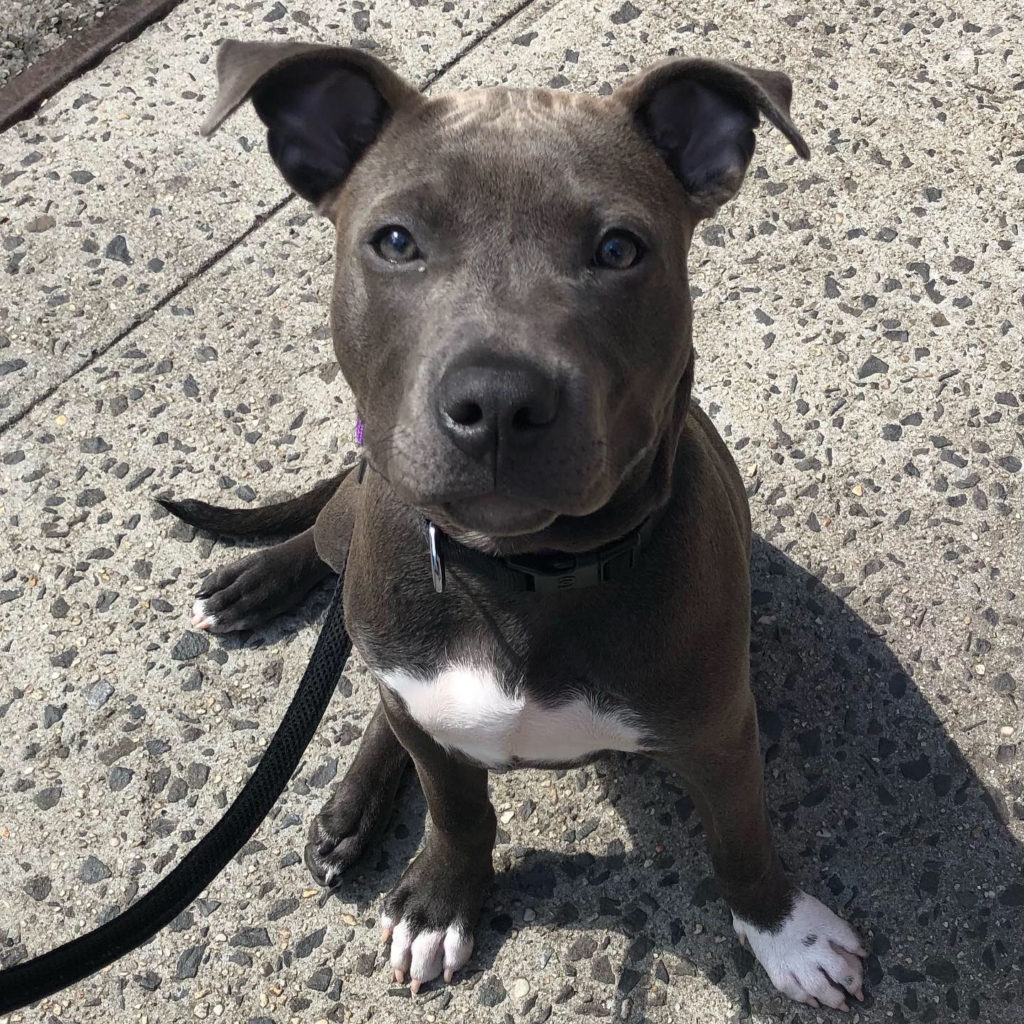Capturing:
Any behavior your dog willingly does on his own can be captured and put on cue. For “sit”, begin with your pup in front of you (he can be on leash if he has a tendency to wander off) start moving back and forth, coaxing him along with a happy voice, silly noises, or thigh pats to get him to follow you. Now, stop. Stand up straight (resist the urge to lean over him), and wait. It may take a little while, so be patient. At some point he’ll start to wonder what’s up and sit down to “think it over”. The moment he does, click or say “good” and reward him with a treat.
You can “capture” a sit at any time. For example, if you’re waiting for the elevator and your pup offers a sit without being asked, you can say “good” or click if you happen to be holding your clicker and offer him a treat.
Luring:
Hold a treat between your thumb and finger tips (think the “chef’s kiss” hand position). Place it just under your pup’s nose and then move the lure upwards, over his head. This will bring your pup’s nose up, since he’ll be trying to follow the treat and this motion should naturally bring his bum down to the ground. The second his bum hits the ground say “good” or click and treat.
Next, begin fading out the food lure. Using the same hand position, but minus the treat, lure your pup into a seated position.
When he’s reliably following the hand signal minus the lure, add the verbal cue “sit”. Say your pup’s name and “sit”, wait a beat, then lure him into position. That beat is important, because it gives your dog a chance to preempt the lure and respond to the cue alone.
At the same time, you can begin making those lures smaller and smaller until your dog can be “lured” into a sit with just a tiny flick of the wrist as well as responding to the verbal cue on its own.
Shaping:
This involves rewarding “successive approximations” until the desired behavior is achieved. For “sit”, it generally isn’t necessary, but should you find yourself with a dog who simply won’t be lured into a sit or offer one on his own, it’s a good trick to have up your sleeve, plus, once you understand the process, you can use it to train virtually any behavior you’d like your pup to learn.
Begin luring your pup into a sit, bur rather than trying to get him all the way into position, the moment his hindquarters begin to dip, click, or say “good” and treat. Over time, you’ll reward deeper and deeper “squats” until his bum finally hits the ground, at which point jackpot reward and take a break.
